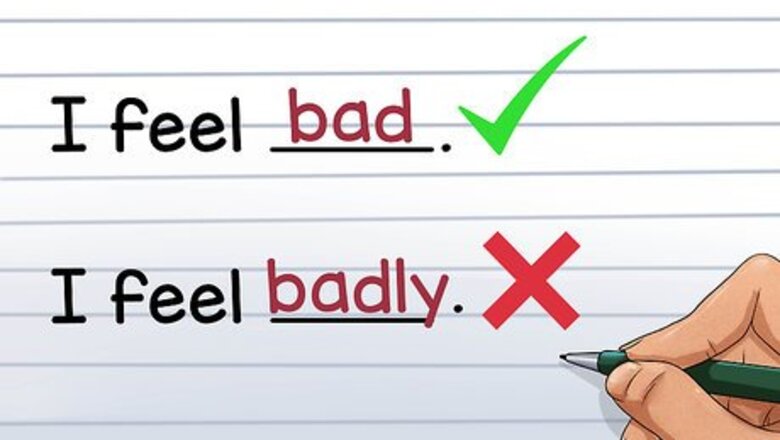
views
Determining if the Sentence Requires Bad or Badly

Determine whether your sentence needs "bad" or "badly". Locate the word that is being referred to by “bad” or “badly” (this word usually directly precedes bad/badly). If your sentence describes a person, place, thing, or idea, you will need to use an adjective. Adjectives are typically descriptive words that are used to further identify, or quantify nouns. "Bad" is an adjective, so it should be used to identify or quantify nouns in your sentences. Adverbs explain how an action (verb) is completed, and are used to modify a verb or another adverb. If your sentence requires an adverb, or a word that modifies an action or verb, you should use “badly." For instance, in the sentence “I feel bad/badly,” the word “feel” is what will determine if an adjective or an adverb will follow. If “feel” is meant to describe a state of being, an adjective will follow. If “feel” is meant to describe the physical action of touching, an adverb will follow. Although hearing is also a sense, it is usually used in the active form, such as, “I hear badly”. If you use the word “hearing” (in the noun form), then you will follow it with an adjective, such as, “My hearing is bad.”
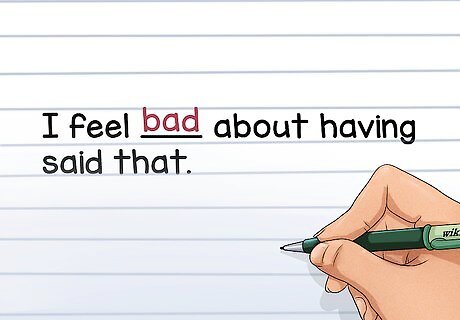
Choose “bad” if your sentence is descriptive. Once you have determined that the meaning of your sentence is descriptive in nature, use the adjective “bad” to further your description. For example, in the sentence “I feel bad about having said that,” the word “feel” determines whether you should use an adjective or an adverb. In this case, “feel” is used descriptively to describe a state of mind. Therefore, the adjective “bad” is used.

Use “badly” if your sentence is active. You should determine if your sentence involves how an action is/was performed. This means it is active and requires an adverb, such as "badly." For instance, in the sentence “I feel badly since my fingers were burned,” the word “feel” is used actively as an action. Instead of describing an emotional state, the sentence now describes a person’s ability to touch. Therefore, the adverb “badly” is used.
Deciding if the Sentence Calls for Good or Well
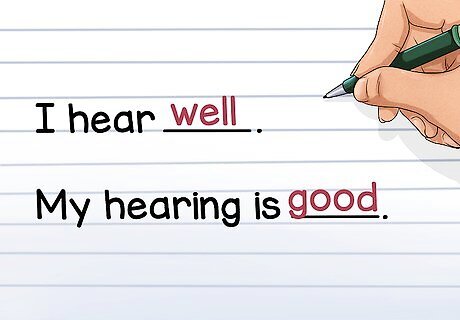
Decide whether your sentence requires "good" or "well". Find the word that is being referred to by “good” or “well” (this word typically directly precedes good/well). Confusion usually arises when someone is referring to the four senses (taste, look, smell, and feel). When the word is used actively (as a verb), the adverb form should follow. If the word is used descriptively, an adjective should follow. For instance, in the sentence “I feel good/well,” the word “feel” is what will determine if an adjective or an adverb will follow. If “feel” is meant to describe a state of being, and adjective will follow. If “feel” is meant to describe the physical action of touching, an adverb will follow. Even though hearing is also one of the five senses, it is typically used in the active form. For instance, “I hear well”. If you use the word “hearing” (in the noun form), then you will follow it with an adjective. For example, “My hearing is good.”

Choose “good” if your sentence is descriptive. Once you know that the meaning of your sentence is descriptive in nature, use the adjective “good” to further your explanation. For example, in the sentence “I feel really good today,” the word “feel” determines whether you should use an adjective or an adverb. In this case, “feel” is used descriptively to describe a state of mind. Therefore, the adjective “good” is used.
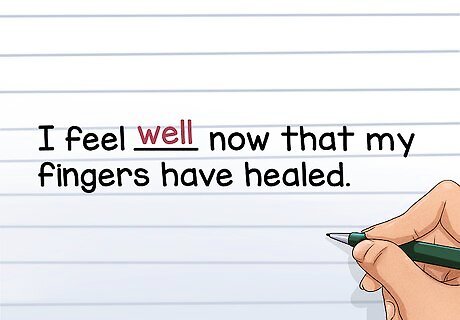
Use “well” if your sentence is active. Once you understand that the meaning of your sentence is active in nature, use the adverb “well” to further your explanation of how an action is/was performed. For instance, in the sentence “I feel well now that my fingers have healed,” the word “feel” is used actively as an action. Instead of describing an emotional state, the sentence now describes a person’s ability to touch (or to “do” something well—which is an action). Therefore, the adverb “well” is used.
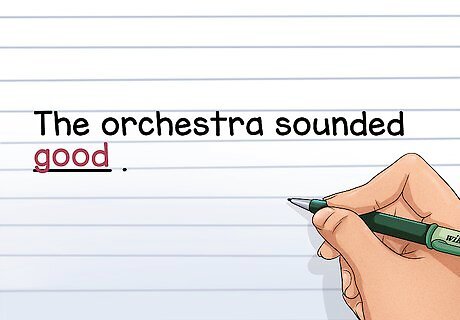
Modify nouns with “good.” “Good” can be used as a predicate adjective to modify nouns, such as a person, place or thing. You can also use "good" to modify pronouns, such as he, she, it, they, we, etc. For example, in the sentence, “The orchestra sounded good”, “good” is modifying the noun “orchestra.” You can also use “good” to describe how you are feeling. For example, “I am feeling good today.”
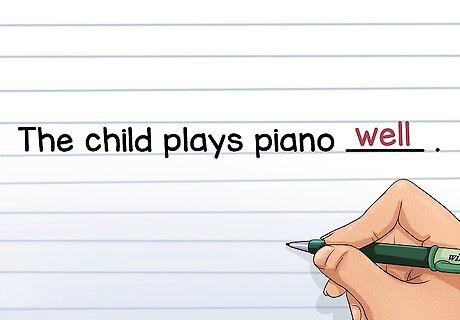
Use well to modify verbs, adjectives, and other verbs. The term “well” is an adverb so it cannot be used to modify nouns. It can only modify adjectives, verbs, and other adverbs. In the sentence, “The child plays piano well”, “well” is modifying the verb “plays.” In the sentence, “This is a well-known bar”, “well” is modifying the adjective “known.” Keep in mind “well” can also be used as an adjective to state how you are feeling, such as “I feel well today.” This is the only exception where “well” is an adjective, not an adverb, in a sentence.




















Comments
0 comment